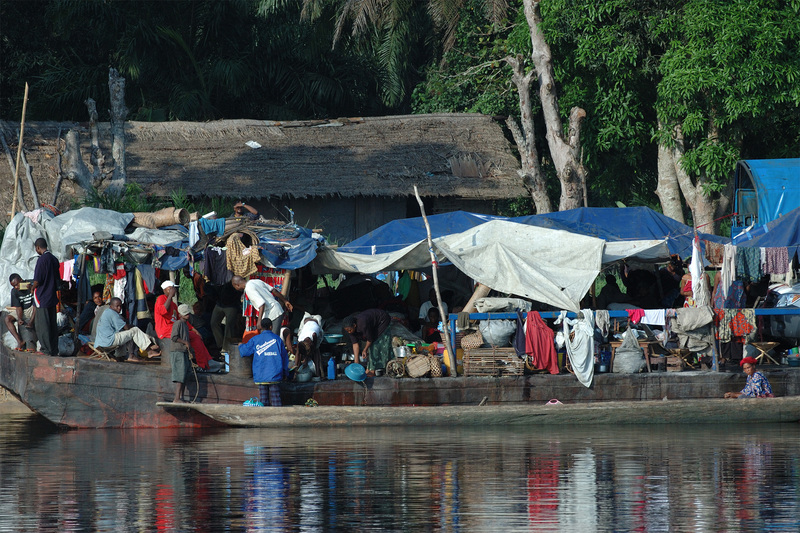New study investigates why refugees aren’t going home
20 March 2019 | Story Sikanyiso Masuku. Photo Julien Harneis, Wikimedia Commons. Read time 6 min.
The number of refugees in Africa has more than doubled between 2009 and 2016, from 2.1 million to 4.9 million, according to the World Bank. Old conflicts have continued and new ones have arisen, forcing large numbers of people to rely on aid and often live in poor and dangerous conditions as refugees.
Our 2018 study looked into the reasons why forced migrants (whether in camps or as free settlers) remain in a permanent state of refuge even though they are sometimes exposed to xenophobia, violence, poverty, hunger, intimidation, coercion and disease in the host countries.
The concept of the refugee cycle suggests that there are three phases in a refugees’ experience – pre-flight, flight, temporary settlement and resettlement (repatriation). Going by this concept, the resettlement stage is the final stage. Our study therefore examined the challenges in completing the refugee cycle.
The options open to a refugee, depending on the policies of host countries, are usually free settlement, shelter in a refugee camp, and returning home (where ideally they can help to create a new peace).
Policies in countries such as Angola, South Africa, DRC, Lesotho and eSwatini, which work through a free settlement system, often expose refugees to xenophobic violence and many other risks. This makes it difficult for refugees to become self sufficient members of the host society.
Ideally, the voluntary return of refugees to their homelands not only marks an end to their suffering in foreign lands, but also relieves the host country of many burdens.
The voluntary return of refugees to their homelands (after peace has been re-established), is therefore an important step towards implementing durable peace-building frameworks (reconciliation and transitional peace) within their own countries. That being said, the paper identified lengthy conflicts, the loss of migration networks and cultural bereavement as some of the most important factors hindering the voluntary return of refugees to their home countries.
Long standing conflicts
The lengthy nature of some of Africa’s wars is one of the main hindrances to ending the “refugee cycle”. Where conflicts drag on over a long time, the future of refugees becomes highly uncertain. They may be forced to stay in a host country for as long as a generation. Under these conditions, refugees often lose the means to become independent.
The Somalia war for instance, is over 27 years and the Democratic Republic of Congo (DRC) – particularly the regions of South Kivu, Kasai and Tanganyika – has been in conflict since the 1990s. The UN Refugee Agency reported that there are over 870 000 Somali refugees in neighbouring states and over two million are internally displaced.
Refugee camps such as Dadaab and Kakuma in Kenya are often without any income generating and livelihood opportunities. This means refugees are unable to take care of themselves and move ahead as migrants.
Loss of migration networks
Another factor that makes it difficult for refugees to leave host countries or settle independently is the loss of their migration networks. These are the social networks which help inform migrants on how to get to safety and cope once there – and also how to return home once conflict has ended.
When conflict continues for a long time, these networks and communities are often lost. This mostly occurs when people move or die, communication infrastructure is destroyed, conditions change and information loses its relevance, among other factors.
Studies among Burundian refugee groups in Tanzania found that most of the displaced people were likely to find it difficult to reclaim their family land if repatriated. Many refugees therefore chose to remain in Tanzania.
Cultural bereavement
The third factor working against the end of the refugee cycle is cultural bereavement. This means the loss of connection with the cultural, linguistic and traditional institutions of the home country. In such situations, over a long period of time refugees change their language and religious beliefs to such an extent that they become strangers to their own nationalities and cultural belief systems.
A good example of this is how Rwandan refugees in the DRC who fled the 1959-1962 Rwandan revolution and the 1994 genocide became part of their new Congolese community. As a result, they have not been able to return to Rwanda even after an end to the conflict in their country.
Residing in refugee-like circumstances in South Kivu, these Rwandan refugees have remained in DRC. In Uganda, despite the 2003 agreement to repatriate 25,000 Rwandan refugees, only 850 accepted to return with the majority of them returning back to Uganda almost immediately after repatriation.
Voluntary repatriation
Ideally, the voluntary return of refugees to their homelands not only marks an end to their suffering in foreign lands, but also relieves the host country of many burdens. Voluntary repatriation is also critical for the return of sustainable peace because it’s difficult to plan for long-term peace without including the needs of the displaced and securing their involvement.
After an end to the civil war in Sierra Leone in 2004, for example, the UN refugee agency successfully completed a three-year repatriation operation of over 178,000 Sierra Leone refugees. Much of the post conflict reconstruction that has since occurred in Sierra Leone, Uganda and Rwanda wouldn’t have been possible without the repatriation of millions of war displaced.
It’s therefore crucial for humanitarian agencies to address the issues that make it difficult for displaced persons to voluntarily return home.
Sikanyiso Masuku, Postdoctoral Researcher at Institute for Democracy Citizenship and Public Policy in Africa, University of Cape Town.









